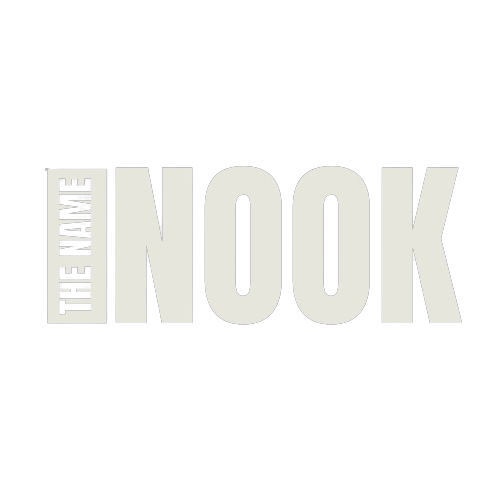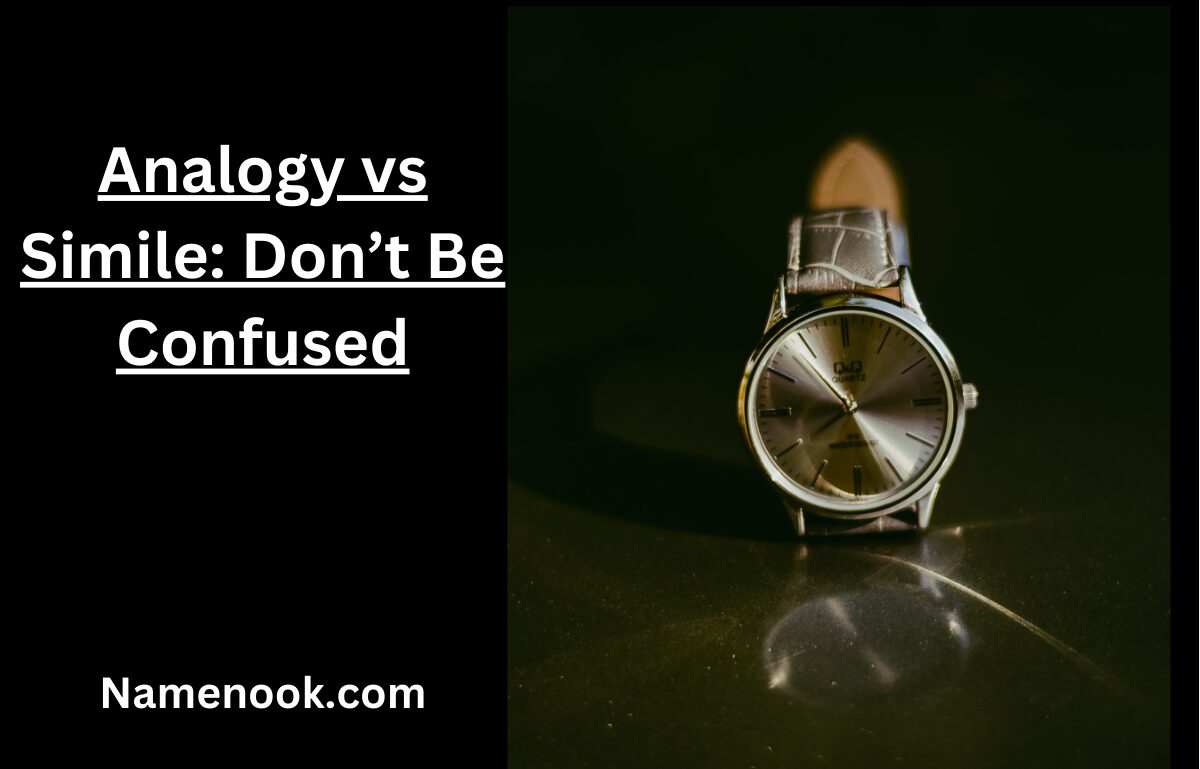Introduction
Discover the difference between Analogy vs Simile in this easy-to-understand guide. Learn when to use each and how they enhance your writing and communication.
Language is one of our most powerful tools. It helps us express ideas, stir emotions, and paint vivid images in the minds of our audience. Among the many ways we use language, analogy and simile are two of the most common techniques for making comparisons.
Although they may seem similar at first glance, understanding the difference between an analogy and a simile can take your writing and communication skills to the next level. When used effectively, they can make your message clearer, more engaging, and easier to relate to.
In this article, we’ll break down the differences between analogies and similes—what they are, where they come from, how they work, and when to use them. By the end, you’ll be better equipped to use these tools to enhance your storytelling, teaching, or everyday conversation.
Read more: [Cancellation or Cancelation: Differences – Grammar Beacon]
What Is an Analogy?
An analogy is a comparison between two things that are quite different, made to explain or clarify an idea by showing how they are alike in a specific way. It’s especially useful when trying to explain something complex by relating it to something more familiar.
Examples of Analogies:
-
Time is a thief. — This suggests that time steals moments from us, just like a thief steals valuables.
-
Life is a journey. — This implies that life involves paths, decisions, and destinations, similar to a trip.
Analogies go beyond surface comparisons—they help explain or deepen understanding of an idea.
Read more: [Sit vs Set: How to Use Them Correctly – Grammar Beacon]
The Origin of the Word “Analogy”
The word analogy comes from the Greek analogia, meaning “proportion” or “relationship.” Its use dates back to ancient philosophy and literature, where analogies helped explain complex or abstract concepts in simpler terms.
Thanks to their versatility, analogies remain a key part of communication in literature, education, and daily life.
What Is a Simile?
A simile is a figure of speech that compares two different things using the words “like” or “as.” Similes are especially helpful for creating strong imagery and making ideas easier to picture or feel.
Examples of Similes:
-
He was as brave as a lion. — This paints a clear picture of someone’s courage by linking it to a lion’s known bravery.
-
Her voice was like music to my ears. — This conveys the pleasantness of her voice by comparing it to music.
Similes are typically short and direct, yet they can leave a powerful impression.
Read more: [Artist vs Artisan: Understanding the Key Differences – Grammar Beacon]
Where the Word “Simile” Comes From
Simile has Latin roots, coming from the word simile, which means “like” or “similar.” Similes have long been used in poetry and literature across cultures to add emotional depth and vividness to writing.
Whether in ancient poetry or modern storytelling, similes make writing more colorful and emotionally resonant.
Analogy vs Simile: What’s the Difference?
While both analogies and similes involve comparisons, they serve different purposes and follow different formats:
| Feature | Analogy | Simile |
|---|---|---|
| Structure | May be longer and more detailed | Uses “like” or “as” |
| Purpose | To explain or clarify an idea | To create vivid imagery |
| Complexity | Often more complex and layered | Usually short and simple |
| Example | “Life is like a box of chocolates; you never know what you’re going to get.” | “She’s as fast as a cheetah.” |
By learning when and how to use analogies and similes, you’ll be able to write more clearly, connect better with your readers, and make even the most complex topics easier to understand.
Nature of Comparison
Analogy:
An analogy goes beyond a simple comparison—it draws a broader, deeper connection between two things. It’s used to explain one idea by relating it to another, often highlighting multiple similarities. This makes analogies especially useful for breaking down complex or unfamiliar topics.
Simile:
A simile, on the other hand, is more direct and specific. It compares two things based on a single quality or feature, using the words “like” or “as.” It’s a straightforward way to help the reader visualize or feel something quickly.
Purpose
Analogy:
The main purpose of an analogy is to clarify a concept by linking it to something familiar. It’s commonly used in teaching, writing, or explaining difficult ideas in simpler terms.
Simile:
Similes are all about imagery and emotion. Writers use them to add color to descriptions, stir feelings, and create memorable visuals. They’re especially popular in literature, poetry, and everyday conversation.
Length and Complexity
Analogy:
Analogies tend to be more detailed and expansive. They often take the form of full sentences—or even paragraphs—that explore various points of similarity between the two things being compared.
Simile:
Similes are usually short and to the point. Just a few words can instantly create a vivid image, making them quick and easy for readers to grasp.
When to Use Analogy vs. Simile
Choosing between an analogy and a simile depends on what you’re trying to achieve and who you’re speaking to.
Use an Analogy When:
-
Explaining a Complex Idea:
For example: “An atom is like a solar system—electrons orbit the nucleus just like planets orbit the sun.” -
Connecting Two Concepts:
For example: “A well-run company is like a symphony orchestra—every part must work in harmony for success.”
Use a Simile When:
-
Creating Vivid Images:
For example: “The moon hung in the sky like a silver coin.” -
Eliciting Emotions:
For example: “Her smile was as warm as the sun.”
Examples in Action: Analogy vs. Simile
Scenario 1: Science Explanation
-
Analogy: “Photosynthesis is like baking a cake—just as a recipe needs specific ingredients and steps, plants need sunlight, water, and carbon dioxide to produce food.”
-
Simile: “The leaves shimmered in the breeze like tiny green dancers.”
Scenario 2: Expressing Emotions
-
Analogy: “Grief is like an ocean—calm at times, but capable of overwhelming you in waves.”
-
Simile: “Her heart dropped like a stone.”
Scenario 3: Everyday Conversations
-
Analogy: “Raising a child is like growing a garden—it takes time, love, and constant care.”
-
Simile: “He was as sneaky as a fox.”
How to Use Analogy and Simile in Writing
Know Your Audience
If your audience is general or younger, stick to simpler similes that are easy to understand. If you’re writing for an academic or technical audience, analogies can help explain challenging ideas.
Mix It Up
You don’t have to choose one over the other. Use similes to grab attention and analogies to offer depth. For example, open a paragraph with a vivid simile, then expand the idea with an analogy for clarity.
Avoid Clichés
Old, overused comparisons like “cold as ice” or “busy as a bee” don’t leave much impact. Instead, aim for fresh, original comparisons that feel specific to your topic or voice.
Practice Makes Perfect
One of the best ways to get better is to create your own analogies and similes. Pick a complex topic and write an analogy to explain it. Then write a simile that captures its mood or tone. The more you practice, the more naturally these tools will come to you.
Why Analogies and Similes Matter in Communication
Understanding the difference between analogies and similes isn’t just useful for writing—it plays a big role in how effectively we communicate across different situations. Here’s why these tools are so important:
1. Making Ideas Clear
Both analogies and similes help make complex or unfamiliar ideas easier to understand by connecting them to things people already know. This is especially valuable in classrooms, training sessions, and educational content where clear explanations are key.
2. Creating Emotional Impact
Similes are great at stirring emotions because they create strong, visual images. They allow writers and speakers to connect with their audience on a personal level, making stories or messages more memorable and emotionally engaging.
3. Expressing Ideas Creatively
Whether you’re writing fiction, an article, or a speech, using analogies and similes allows you to be more expressive and imaginative. These comparisons bring depth and flair to your language, helping you present your thoughts in a more engaging way.
4. Connecting Through Culture
Many analogies and similes are rooted in cultural references. When used thoughtfully, they can make your message feel more relatable and meaningful to a specific audience. However, it’s important to be mindful of cultural context to ensure clarity and avoid misunderstandings.
Conclusion
In short, knowing how and when to use analogies and similes can take your communication to the next level. While both involve comparing things, they do so in different ways that serve different purposes.
-
Analogies help explain and simplify complex concepts.
-
Similes add emotional depth and vivid imagery.
Mastering these tools can make your writing more powerful, your ideas more relatable, and your storytelling more compelling—whether you’re explaining science, writing creatively, or just having a conversation.
So next time you’re writing or speaking, try using an analogy to clarify your message or a simile to paint a picture. With practice, these comparisons will become a natural and impactful part of your communication style.
Quick Comparison: Analogy vs Simile
| Aspect | Analogy | Simile |
|---|---|---|
| Definition | Compares two different things to explain an idea | Directly compares two things using “like” or “as” |
| Purpose | Clarifies complex concepts | Creates vivid imagery and emotion |
| Structure | Often longer, may explore multiple similarities | Short and focused on a single feature |
| Use in Communication | Ideal for teaching or detailed explanations | Great for storytelling and emotional impact |
| Examples | “Life is a journey.” | “He was as brave as a lion.” |
| Origin | From Greek analogia (“relationship” or “proportion”) | From Latin simile (“like” or “similar”) |
| Common Uses | Academic writing, speeches, essays | Poetry, fiction, everyday speech |
| Best Used For | Explaining or connecting complex ideas | Enhancing description and emotion |

